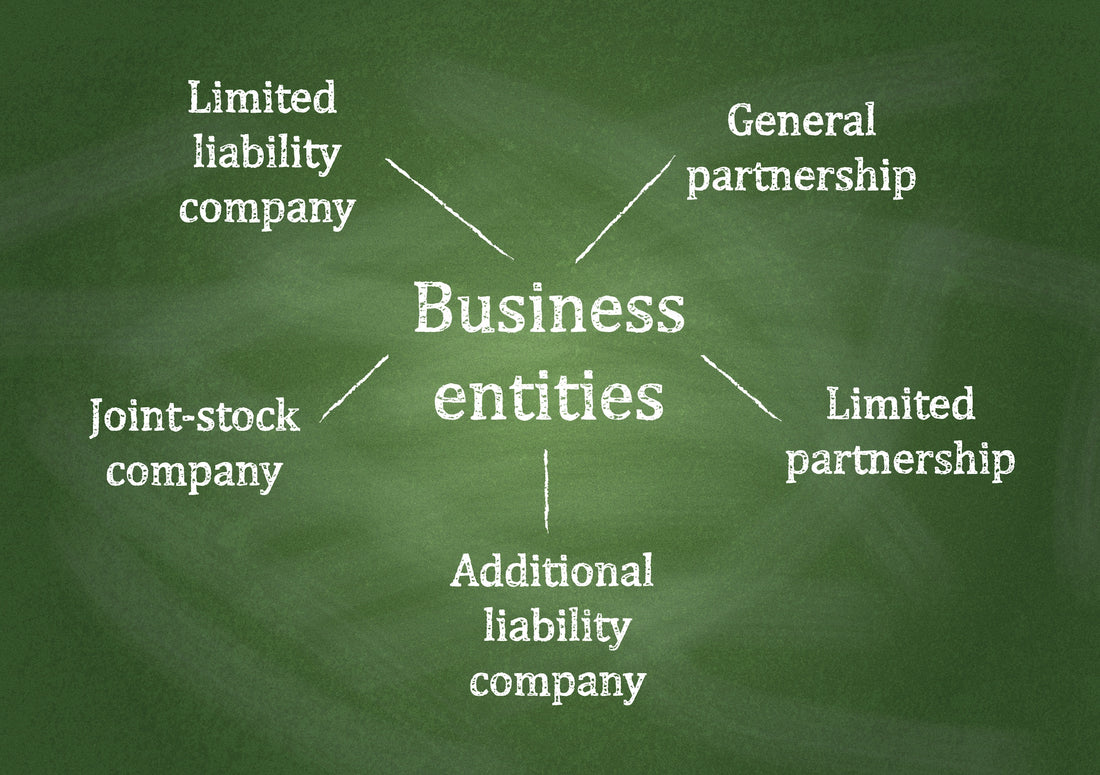
Japanese Company Types Explained: KK vs. GK
Yoshio YamaguchiShare
When establishing a company in Japan, you need to decide what type of company to form. Although the Companies Act specifies four types of companies, most people choose between a Kabushiki Kaisha (KK) or a Godo Kaisha (GK). This article explains the meaning, advantages, and disadvantages of each.
For tax purposes, there is no distinction between a KK and a GK; both are treated as corporations, so neither form has tax advantages or disadvantages.
Defining Kabushiki Kaisha (KK) and a Godo Kaisha (GK)
Limited Liability
Both a KK and a GK have limited liability, meaning that investors are only responsible for company debts up to the amount they have invested. Creditors of the company cannot pursue the personal assets of investors, even if the company's assets are depleted.
In English-language sources, a GK is often translated as "LLC" (Limited Liability Company), while a KK is translated as "Co., Ltd." (Company Limited). However, both terms directly translate to "limited liability company," making it difficult to distinguish between them.
In the United States, an LLC is a recognized legal structure that benefits from pass-through taxation, where income is taxed at the individual, not corporate level. In contrast, Japanese GKs are subject to corporate income tax, a significant difference from US LLCs. For this reason, translating GK as "LLC" may not accurately convey the distinction.
I believe using the romanized forms—Kabushiki Kaisha (KK) and Godo Kaisha (GK)—avoids confusion and preserves the unique aspects of each entity type.
Separation of Ownership and Management
Philosophically, a GK is characterized by the alignment of ownership and management, whereas a KK is defined by the separation of ownership and management. In an GK, a small group of investors typically serves as both owners and managers, with the expectation of strong personal trust among the members.
On the other hand, a KK is structured to facilitate large-scale fundraising, with a focus on multiple investors (shareholders) and corporate creditors. It is designed with governance mechanisms that protect both shareholders and creditors.
It's worth noting that, even in a KK, shareholders can serve as directors and participate in management. Therefore, the separation of ownership and management is not absolute.
Transfer of Ownership Interest (Recovery of Invested Capital)
In a GK, mutual trust among members is highly valued. Therefore, as a general rule, transferring ownership interest requires the consent of the other members (Companies Act, Article 585, Paragraph 1). In contrast, in a KK, shares can generally be transferred freely (the principle of free transferability of shares), though certain restrictions can be imposed to some extent.
Characteristics of a Kabushiki Kaisha (KK)
Ability to Issue Shares
- A KK can raise substantial capital by listing on financial markets. This structure is suitable for companies aiming to become large enterprises in the future.
- It is possible to design stock as compensation for officers and employees, such as through stock options, Restricted Stock Units (RSUs), or Employee Stock Purchase Plans (ESPPs).
- A KK can implement various strategies using shares, such as establishing an employee stock ownership plan (ESOP) to facilitate business succession or deepening partnerships with other companies by cross-holding shares.
- To prevent undesirable individuals from becoming shareholders, a KK can restrict the transfer of shares, requiring board approval. This flexibility makes the KK structure suitable even for smaller companies that prioritize trust among a limited number of shareholders.
Complex Organizational Structure
A KK typically involves several organizational bodies, including a general shareholders' meeting, directors, a board of directors, auditors, a board of auditors, accounting auditors, and committees. For smaller businesses, establishing only a general shareholders' meeting and a director may suffice. Depending on factors such as company size and the presence of share transfer restrictions, additional entities like a board of directors or auditors may be required.
Emphasis on Governance
In a KK, significant emphasis is placed on governance to protect various stakeholders, including shareholders and creditors, and to ensure the corporation's credibility.
When a KK becomes publicly listed, it becomes subject to the Financial Instruments and Exchange Act and stock exchange rules. Larger KKs are held to even higher standards to maintain public trust.
For example:
- In certain cases, a KK is required to establish supervisory bodies such as a board of directors or a board of auditors.
- For large KKs (defined as those with capital of at least 500 million yen or total liabilities of at least 20 billion yen), a statutory audit by a certified public accountant is mandatory under the Companies Act.
- Large KKs with a board of directors must also establish internal controls as required by the Companies Act.
- Publicly listed KKs are subject to financial statement audits and internal control audits under the Financial Instruments and Exchange Act, in addition to accounting audits under the Companies Act.
Characteristics of a Godo Kaisha (GK)
Lower Setup Costs
When establishing a KK, a registration and license tax equal to 0.7% of the capital (with a minimum fee of 150,000 yen) is required upon submitting the registration application.
In contrast, a GK has a minimum registration and license tax of only 60,000 yen, making it 90,000 yen cheaper than setting up a KK.
Additionally, a KK requires notarization of its Articles of Incorporation, which can cost between 30,000 to 50,000 yen in fees. This requirement does not apply to a GK, thus reducing setup costs even further.
Greater Flexibility in Business Operations
A GK does not have the same requirements for directors, a board of directors, or general shareholders’ meetings as a KK. Instead, the members (investors) of a GK typically manage the business directly. If there are multiple members, decisions are generally made by a majority vote, unless the Articles of Incorporation specify otherwise.
No Requirement to Publish Financial Statements
A GK is not obligated to publish its financial statements in the Official Gazette or on a website at the end of each fiscal year. This means that a GK does not have to disclose its financial details to the public, saving approximately 60,000 yen in publication fees.
No Requirement for a Bank Account to Deposit Capital
In the case of a KK, the capital must be deposited into a bank account (as per Article 34 of the Companies Act). However, a GK is not subject to this requirement, so the representative can simply issue a receipt for the investment funds. For foreign individuals or companies establishing a subsidiary in Japan, securing a bank account in advance can be challenging. However, a Godo Kaisha can be established without a bank account, making it a practical option for foreign entities.
Choosing Between a Kabushiki Kaisha (KK) and a Godo Kaisha (GK)
General Guidelines
As a general rule, Godo Kaisha is more appropriate when trust-based relationships among a small group of investors are crucial and no changes in investors are anticipated. In contrast, if corporate growth requires a larger number of investors and creditors, Kabushiki Kaisha preferable, whereas a GK may not be as suitable.
In principle, KK is appropriate for most businesses. However, in practice, establishing KK is more costly and involves more complex procedures, such as the certification of articles of incorporation and depositing capital into a bank account. If simplicity in the establishment process is a priority, GK is a better option.
Startups
If you envision significant growth for your company in the future, a KK might be the better option. Only a KK can go public, allowing you to take advantage of benefits such as stock-based compensation plans, which can help attract and retain talent.
Owner-Operated Businesses
If you are the sole owner (investor) of the company, are uncertain about the scale you wish to achieve in the future, and want to minimize initial setup costs, a GK is likely a suitable choice. There are also fewer requirements around corporate structure and governance. If needed, you can later convert a GK into a KK as the business grows.
Subsidiaries
When setting up a subsidiary, a KK is usually preferable if the subsidiary will operate with a degree of independence from the parent company, including independent decision-making and business activities.
Conversely, if the subsidiary is to remain under tight control of the parent company, without its own fundraising or independent decision-making, and if limiting public disclosure is desirable, a GK would be more suitable since it has no obligation to publish disclosures.
Conclusion
Choosing between a Kabushiki Kaisha (KK) and a Godo Kaisha (GK) is an essential decision when establishing a company in Japan. Each structure has unique characteristics that may align differently with your business goals.
Generally, a KK suits companies aiming for large-scale growth and external financing, thanks to its flexibility in issuing shares and potential for public listing. On the other hand, a GK is ideal for smaller businesses seeking to minimize setup costs and simplify operations, with the added benefit of reduced regulatory obligations.
Ultimately, the right choice depends on your company’s long-term objectives, funding needs, and operational preferences. If your circumstances change over time, remember that it's possible to restructure your business to adapt to new priorities.



